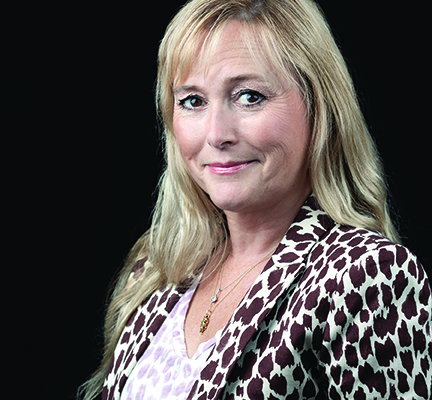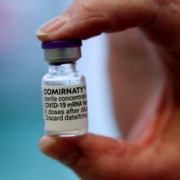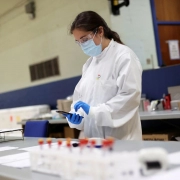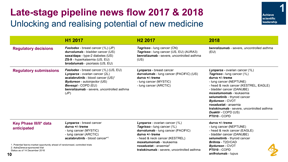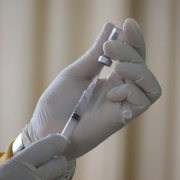Q&A with Curebase’s Jane Myles
Q&A with Curebase’s Jane Myles
By Andrew Humphreys • [email protected]
Med Ad News talked to Jane Myles, vice president of clinical trial innovation at Curebase, about improving clinical trials and patient experience.
Med Ad News: How will the trend to bring clinical studies to the patient accelerate in 2023?
Janes Myles: We certainly have evidence from regulators in the form of policies and even the request for information (RFI) that they want trials to come to patients. And we also know patients want the option of being able to participate in a decentralized clinical trial through their community providers. But my concern is that it would be very easy for sponsors to revert to the old way of doing things because we believe the pandemic is over.
It’s essential to push ahead to make sure that we don’t simply go back to what is familiar. One way to ensure we move forward is to incorporate patient input into the design of clinical trials. As we shift our thinking and methods, that has to become a foundational element in trial design so not only can we deliver the trial to patients, but also the trial is built in a way that’s meaningful to them.
I understand there’s regulatory tension there, but this two-way dialogue is going to help us in so many ways with respect to creating meaningful endpoints for patients, building the trust equation, and helping sponsors understand how insights from patients can help them influence regulators.
Med Ad News: How will Clinical Research as a Care Option (CRAACO) make things more convenient for patients?
Myles: This is a topic I spent some time on as I created a response to the RFI. Clinical research as a care option is helping blend clinical research with clinical care. I think that’s where clinical research is headed. But to deliver on that vision, we have to put clinical trials in the hands of community physicians and the treating physicians with whom patients already have that trust bond. It’s a fundamental shift in our thinking because, sadly, most people still believe clinical research is the last care option for a patient. I think of it as one of the first and most important treatment options, especially in a setting like oncology, where that first treatment modality used influences everything you can use afterward.
So if we can find a way for the treating oncologists to be willing to participate in clinical research while we educate patients on how clinical research is an ideal care option for them, we make it easy for the patient to participate and we help her understand how she would benefit from taking part.
Further, if we can engage treating physicians in clinical research, we’re going to increase the pool of researchers as well as the pool of willing participants. But we have to design trials that are as simple as possible, which doesn’t mean they’re not answering tough questions; it means you need to align the design to the standard of care and reduce as much of the administrative burden as possible. And that’s where decentralized trials and integrated research organizations can actually offer support to those physicians who’ve never done this work in the past.
Med Ad News: In what way is Curebase reinventing clinical trials and research from the ground up?
Myles: Curebase offers sponsors a one-stop solution that enables them to design, execute, and oversee a clinical trial in a decentralized way. And it’s done in a very patient-friendly manner using the patient’s own device.
That’s an incredibly important element. There was evidence published recently – and this is no surprise – that patients prefer to use their own devices rather than a separate device if they’re going to enter data for any reason, but especially for healthcare and clinical trials. So Curebase built a platform that works on the web, it works on patients’ tablet, it works on their smartphones. Familiarity with the device decreases a big part of the friction hurdle for participants.
Unfortunately, it’s still a challenge for under-represented patients to participate in decentralized clinical trials. To help close this gap, Curebase has tools and partners to supply those devices to patients and provide training on how to use them. If necessary, our clinical research coordinators can work with patients through a telemedicine visit or just a phone call to help them navigate the study and do the data entry. That, of course, requires agreement from the sponsor that it will honor data privacy and maintain clinical rigor. But in some cases, that is how to ensure you get the data in an objective way from under-represented populations.
Med Ad News: How can the industry become more efficient in optimizing data capture for clinical trials?
Myles: The Decentralized Trials and Research Alliance (DTRA) is working on two initiatives that address this challenge. One is about data standards and how to ensure data from disparate sources are defined in the same way. The second DTRA initiative seeks solutions to data connectivity and interoperability. A large part of the mission of the Office of the National Coordinator for Health Information Technology (ONC) is to do exactly that, to use new technologies like FHIR and emerging standards they are developing through the Trusted Exchange Framework and Common Agreement (TEFCA) so that certain data elements are now standardized – not just when you would use them, but how they would appear in a database, the format to configure the data to, and how you would expect the data to land in the data set.
That’s critical because as health networks and EHRs align to these standards, we get to a place where you could extract data rather than enter it. If we had those standard data parameters and we knew the data in the EHR met them, we wouldn’t need to ask patients to get a local lab draw to confirm that their white cells were in a state where they could endure the next cycle of chemotherapy. We wouldn’t have to redo the screening labs, most of them at least, for patients already seeking care for whatever treatment they are about to undertake in a clinical trial. It reduces the burden on patients. And it reduces the costs of healthcare and clinical trials.
Med Ad News: Please discuss the benefits and functionality of a coordinated clinical trials enterprise.
Myles: Let’s imagine you have to execute a clinical trial in two weeks because we’re in a new public health emergency that will take a very coordinated clinical trial enterprise, both with sites and sponsors, and maybe with a willing pool of patients and with regulators who understand what’s going to need to flex. So, the benefits are speed, scalability, and repeatability.
Now imagine you have willing participants who are physicians who understand the expectations of clinical research and that the data elements we’re going to collect are similar enough to standard of care in roughly 80% or more of the trials they can execute. That’s huge.
This level of coordination also takes coming to agreement on standard terms in a master services agreement or contract, and also working with ethics review bodies that understand why we need the speed to execute at scale. Those are not small problems to solve because we need incentives to create this coordinated research network and a group of willing physicians without tipping the balance on patient decision making and undue influence to participate in a trial. There are some interesting ethical questions in there.
But there also are some pragmatic aspects to helping physicians understand what’s the difference, if any, in what they will earn as a physician if they’re treating a patient clinically versus treating a patient in a clinical trial. This would require some serious work.
Let’s say, however, we get through all those hurdles. Theoretically, you don’t need this coordinated clinical trials enterprise for emergencies only – you could be doing all sorts of trials to address public health issues, such as cardiovascular disease through epidemiologic studies incorporating the use of real-world data. Having treating physicians act as investigators and building a patient pool of ready participants who understand what research is for and trust the process will provide immense benefits. Probably one of the most important ones to me is persuading enough people that science and medicine help society and the greater good. That’s a missing part of the equation right now.
Med Ad News: What are some of the primary goals of the Decentralized Trials & Research Alliance (DTRA) leadership committee?
Myles: I’d say the overarching goals of the Leadership Committee are to help drive the adoption of these new methods so that in 10 years or even less, there’s no “D” in DCTs. The collaborative ecosystem DTRA has created allows an opportunity for that exchange in an uncompetitive way. Instead of focusing on intellectual property, DTRA members are sharing information about implementing the key performance indicators (KPIs) the organization published for DCTs and what was difficult. This will allow members to learn from the experiences of others, which will accelerate the adoption of DCTs.
Andrew Humphreys is contributing editor of Med Ad News and PharmaLive.com.

